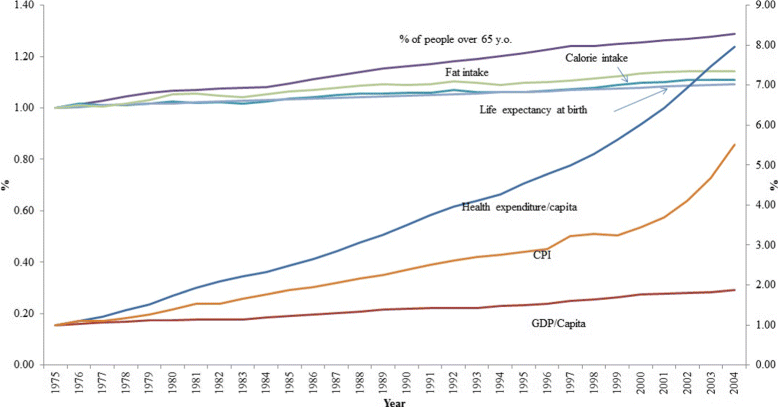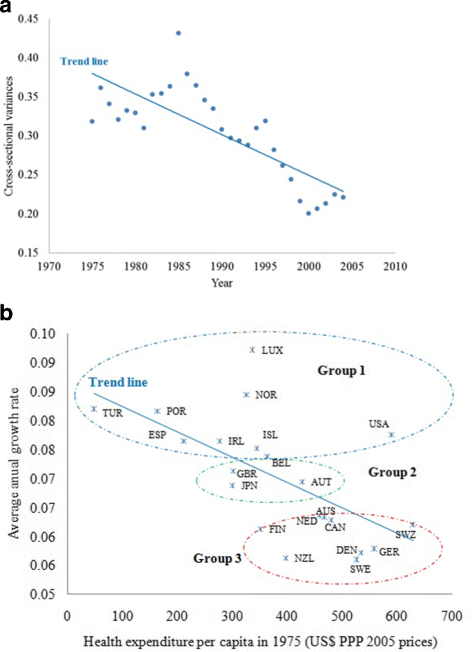Convergence and determinants of health expenditures in OECD countries
- PMID: 28819772
- PMCID: PMC5560333
- DOI: 10.1186/s13561-017-0164-4
Convergence and determinants of health expenditures in OECD countries
Abstract
This study examines the trend and determinants of health expenditures in OECD countries over the 1975-2004 period. Based on recent developments in the economic growth literature we propose and test the hypothesis that health care expenditures in countries of similar economic development level may converge. We hypothesise that the main drivers for growth in health care costs include: aging population, technological progress and health insurance. The results reveal no evidence that health expenditures among OECD countries converge. Nevertheless, there is evidence of convergence among three sub-groups of countries. We found that the main driver of health expenditure is technological progress. Our results also suggest that health care is a (national) necessity, not a luxury good as some other studies in this field have found.
Keywords: Convergence; Health expenditure; OECD countries.
Conflict of interest statement
Competing interests
The authors declare that they have no competing interests.
Publisher’s Note
Springer Nature remains neutral with regard to jurisdictional claims in published maps and institutional affiliations.
Figures
References
-
- Baltagi BH, Moscone F. Health care expenditure and income in the OECD reconsidered: Evidence from panel data. Econ Model. 2010;27(4):804–11. doi: 10.1016/j.econmod.2009.12.001. - DOI
-
- Barro RJ, Sala-i Martin X. Economic growth and convergence across the United States. NBER Working Paper No. 3419. 1990. doi:10.3386/w3419, http://www.nber.org/papers/w3419. Accessed 5 May 2016. - DOI
LinkOut - more resources
Full Text Sources
Other Literature Sources



